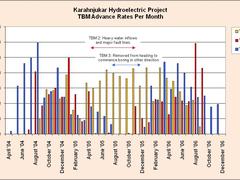
|
Sep 10, 2013
Article
Lok Home
Recent experience and development of Hard Rock Tunnel Boring on most large diameter tunnels, especially above 8m in diameter, has shown that improved ground support is a prerequisite to improved monthly advance rates. The opinions and comments presented in this paper are heavily influenced by recent experiences on the 12.4m diameter Jinping Project, the 10m diameter AMR project and the 14.4m diameter Niagara Project.
|
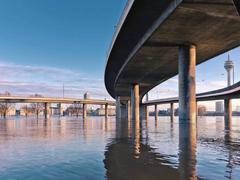
|
Oct 28, 2013
Article
Xylem Inc.
Flooding is one of the most universal – and destructive – challenges facing cities around the world. World Bank research suggests that floods are the most frequent of all natural disasters and that the number of flood events is rising rapidly. In 2010 alone, 178 million people were affected by floods, with losses exceeding $40 billion.
|
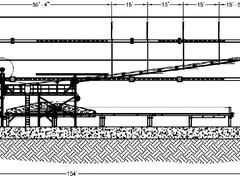
|
Nov 22, 2013
Article
Dean Workman
While continuous conveyors have become the muck removal system of choice in long, hard rock TBM tunnels, they have gained acceptance in soft ground tunnels only recently. Soft ground, EPB TBM-driven tunnels provide a challenging environment for continuous conveyors due to the variety of materials present. The design of both horizontal and vertical soft ground conveyors will vary depending on the types of excavated material, amount of water present, and other factors. This paper will address the challenges of effective conveyance in different ground materials by analyzing conveyor performance in several recent EPB TBM projects.
|
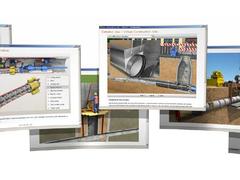
|
Mar 19, 2013
Article
M.A. Martin Behr
Water obtains its fundamental importance from its life giving characteristic. Through its close relationship with health, food security, energy, environment and economy, water is the most important basic resource. Access to water and basic sanitation are, in accordance with the 2010 UN General Assembly resolution, an essential human right. However, this fundamental right is not accessible to a large portion of the world’s population. Sustainable solutions for efficient and resource saving management are therefore needed. A key factor for this is the qualification of skilled professionals. AQWA Academy offers a training program for water sector professionals, which aims to make a contribution to the improvement of the water situation in the most arid region of the world.
|

|
Mar 28, 2014
Article
Achim Kühn
Top performance at minus 27 degrees Celsius
|
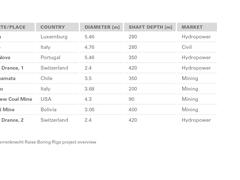
|
Jun 16, 2014
Article
Herrenknecht AG
With growing demand for raw materials, mines are applying increasing effort and expense to open up deep and difficult to access resources. With this in mind, the new Herrenknecht product portfolio of Raise Boring Rigs allows the optimal drilling of shafts with larger diametersat depths of up to 2,000 meters.
In the new and further development of Raise Boring Rigs, Herrenknecht draws on proven technologies and components as well as on extensive knowhow in the area of mechanized tunnelling technology.
|
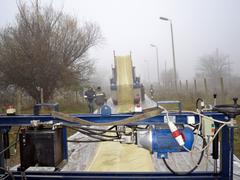
|
Jul 08, 2014
Article
Lena Zemke
Pilot project with CIPP technology of SEKISUI SPR in Shumen, Bulgaria - The challenges often involved in drinking water rehabilitation projects are the available time window, residual flow capacity after the rehabilitation, diameter and length to be renewed. Other factors are the capacity to negotiate bends and local contruction site conditions.
|
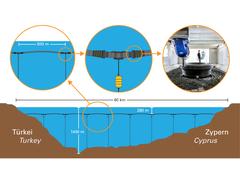
|
Jul 24, 2014
Article
Dragisa Dubocanin
The use of polyethylene pressure pipelines is gaining ever greater international regard and becoming ever more sophisticated.The reasons are diverse, and include this material‘s excellent resistance to corrosion, the flexibility of PE 100 pipes, and the resultant installation and cost benefits.
|
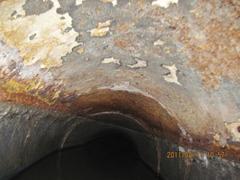
|
Jul 30, 2014
Article
Pure Technologies Ltd.
A Review and Analysis of More than 400 Miles of Force Main Inspection and Condition Assessment Data.
|
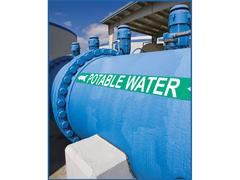
|
Aug 15, 2014
Article
Michelle Pawlowicz
Next Generation Mag Meter Measuring Flow in a Pump Station
|
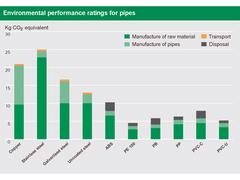
|
Oct 06, 2014
Article
Dr.-Ing. Robert Stein
Since the early 1970s, we have developed from being a prosperity-oriented and throwaway society to become more environmentally aware, though this same society adopts a highly critical attitude towards some real achievements. Why should PVC, of all things, be such a highly controversial material? This is mainly because it has been known, since the late 1980s, that many chloroorganic compounds, such as propellant gas, paint, solvents and plastics are toxic, carcinogenic, genetically harmful and damage the environment. Since then, the Green Party has pushed for the chlorine industry to be phased out. In terms of chemical structure, PVC contains a high proportion of chlorine, which has led to it being caught up in the political crossfire.
|
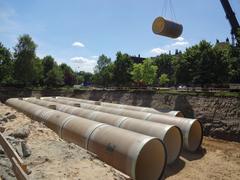
|
Nov 19, 2014
Article
Jessica Maier
In the view of environmental influences and the expansion of urban areas, the issue of flood prevention becomes a key task for urban infrastructure. HOBAS Tanks have become a widely accepted remedy for this problem – such as a 2,410 m³ large retention system DN 3600 that has been installed in Poland in 2014.
|

|
Jan 07, 2015
Article
Lena Tiedeken
Sewer rehabilitation with SPR™ technology in Budapest, Hungary
|
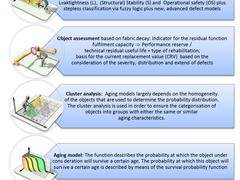
|
May 06, 2015
Article
Dr.-Ing. Robert Stein
This is the first contribution of a three-part series that deals with the following approach: "Evaluation models for the assessment of the structural and operational condition of drain and sewer systems". It is motivated by the fact that evaluation models serve as helpful tools for an assessment of the current structural/operational condition of a drain and sewer system and for establishing of a benchmark for prioritizing maintenance and rehabilitation activities based on data acquired from inspections of structural/ operational conditions plus possible influencing conditions.
|
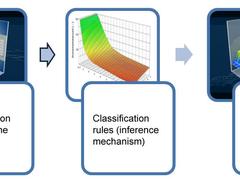
|
Jun 05, 2015
Article
Dr.-Ing. Robert Stein
This is the second part of the technical report series “Evaluation models for the assessment of the structural and operational condition of drain and sewer systems“. It is about the advanced evaluation model STATUS Sewer.
|
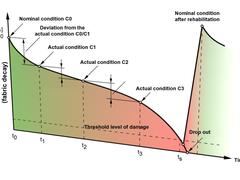
|
Jul 08, 2015
Article
Dr.-Ing. Robert Stein
This is the third and last part of the technical report series “Evaluation models for the assessment of the structural and operational condition of drain and sewer systems“. It deals with the results of the analysis and the summary of all survey events.
|
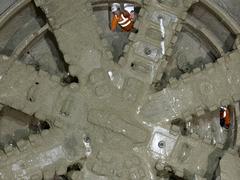
|
Aug 11, 2015
Article
Achim Kühn
With the breakthrough of Herrenknecht tunnel borer "Victoria" on May 23,
2015, eight Herrenknecht tunnel boring machines magnificently completed a
unique mission at Europe's largest infrastructure construction project. In just
three years construction crews from three UK and European consortia
navigated the high-tech borers from Schwanau through the center of London.
Citizens and politicians are proud of the engineering achievements. 42
kilometers of high quality tunnels have been created under one of the world’s
busiest cities. Crossrail will carry an estimated 200 million passengers per
year.
|

|
Sep 14, 2015
Article
Achim Kühn
Kuala Lumpur's karst soil riddled with fissures and crevices is a real challenge for tunnel builders. Herrenknecht, the global market leader in mechanized tunnelling technology, developed for Klang Valley MRT Project in Malaysia´s capital in collaboration with MMC-Gamuda Joint Venture a new type of machine. The Variable Density tunnel boring machine can be operated in four different tunnelling modes and thus perfectly adapted to the different conditions. After nearly two years of tunnelling, in mid-April 9.5 kilometers of tunnel were completed and the new technology had proven itself. A major breakthrough for Kuala Lumpur’s Metro and for mechanized tunnelling in difficult soft ground.
|
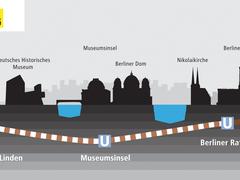
|
Dec 03, 2015
Article
Achim Kühn
Upon reaching its final position at the Brandenburg Gate on 10/14/2015 the Mixshield "Bärlinde" has successfully completed its mission in Berlin. Behind the tunnel boring machine (TBM) are two 1,620 meter long parallel tubes, built through the historic center of the capital.
|

|
Dec 23, 2015
Article
General Manager Udo Steppe
Challenging application in dam wall requires unusual cable lengths.
|
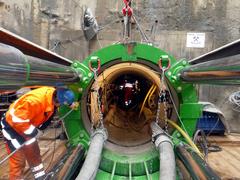
|
Jan 28, 2016
Article
Dr.-Ing. Robert Stein
Finding the weakest link and providing new solutions can help reduce pipe damage and increase scope for pipe-jacking projects
|
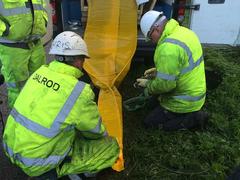
|
Feb 23, 2016
Article
Bryan Lord
DALROD recently ventured into new pipe-lining territory using, for the first time, UV cured lining on a project for client Peterborough City Council (PCC)
|
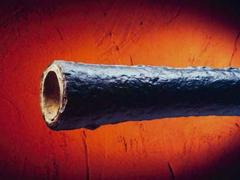
|
Aug 12, 2016
Article
Dr.-Ing. Jürgen Rammelsberg
The “50th” anniversary issue of the EADIPS®/ FGR® annual journal has been an occasion to look back over the history of 500 years of drinking water transport and distribution. This area of life is inseparably linked to the traditional material of “cast iron”: it has put its stamp on the development of drinking water supply for half a millennium but, with a constant influx of improvements, optimisations and innovations over this timespan, it has nevertheless remained ever young. The cast iron pipe industry, in collaboration with its users, has always managed to keep abreast of the latest state of the art with a modern and sustainable piping system comprising pipes, fittings and valves.
|

|
Aug 29, 2016
Article
Dr.-Ing. Robert Stein
STATUS is a stochastic "ageing model" for rehabilitation & maintenance strategy analysis, development and optimisation, which has been successfully applied in Germany for more than 14 years.
|
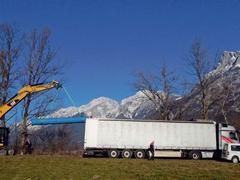
|
Jun 27, 2017
Article
Ing. Christian Auer
The use of ductile iron pipe systems for penstock pipelines is constantly increasing with the promotion of renewable energy sources. In this area of application the mechanical and technological requirements placed on pipe materials as well as the need for security are considerably higher than for pipes used for the distribution of drinking water. Therefore it is imperative that material modifications are developed to meet these increased demands. This report describes the safety concept (the “leak-before-break criterion), the technical material modifications and investigations necessary for practical implementation which will result in better utilisation of ductile cast iron as a material in high-pressure applications and the particular requirements for both crew and piping systems when laying turbine pipelines in alpine environments. All in all a basket of technical goodies!
|